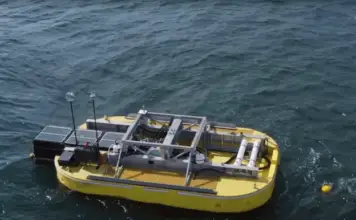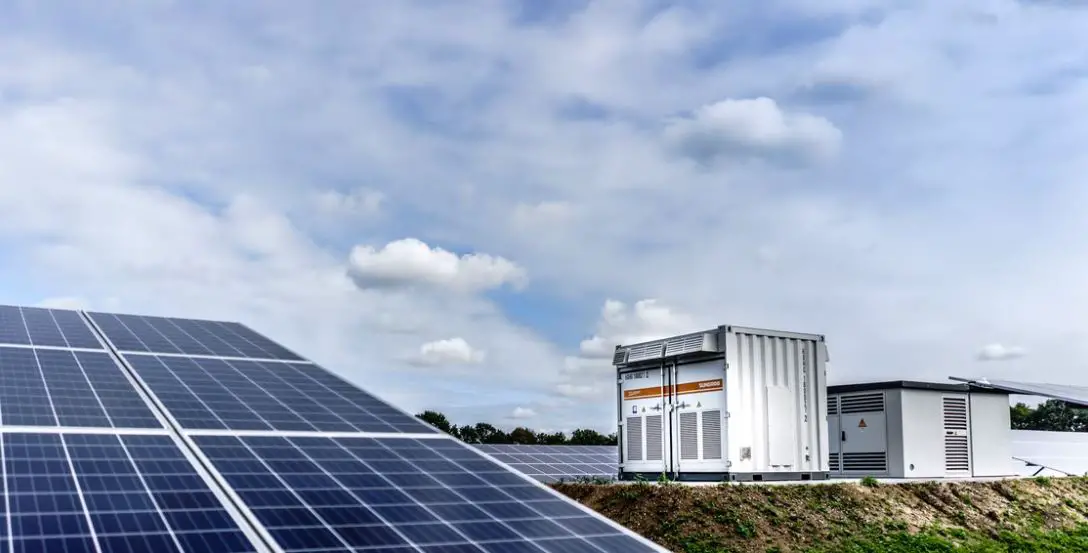Coal-fired and nuclear power are now unpopular, and the global power transition is pinning its hopes on renewable energy. Japan has been looking for new green energy after the Fukushima nuclear disaster.
In addition to solar energy, wind energy, geothermal energy, and tides, Japan has now discovered that deep ocean currents can also generate electricity, using one of the strongest ocean currents in the world to draw electricity, and it is not immune to climate change. impact, is a more constant and stable renewable energy.
Japanese heavy machinery manufacturer IHI Corp has been testing deep-ocean current generation for more than a decade, and recently successfully tested a prototype of a large aircraft-sized generator that looks like a 330 -ton aircraft with two counter-rotating turbofans. Floating and anchoring on the seabed, 30 to 50 meters below the sea surface . The deep-sea generator relies on the world’s strongest Kuroshio power generation on the east coast of Japan. The power is transmitted through the submarine cable, and the test process generates about 100 kilowatts of stable power.
Japan is already a Renewable Leader
Most of the world’s investment in renewable energy is wind and solar. Japan is the world’s third largest solar power generation country, and has invested heavily in offshore wind power, but these energy sources cannot provide the stability and reliability of ocean current power systems. Experts from the University of Tokyo support ocean current power generation because ocean current has advantages in Japan, and believes that wind power generation is more suitable for Europe, which is mainly affected by westerly winds and is located in high latitudes.
The advantage of ocean currents is stability. Since there is almost no fluctuation in the flow speed and direction, there is a capacity factor of 50% to 70% , about 29% for onshore wind power , and about 15% for solar power . The capacity factor is a measure of how often a system generates electricity, but installing systems underwater is more complex than onshore, as subsea systems must be strong enough to withstand the aggressive and harsh conditions of deep ocean currents.
Experts believe that unlike Europe, which has a long history of oil exploration in the North Sea, Japan has little experience in offshore construction. Building a system strong enough to withstand the harsh conditions of deep ocean currents and reducing maintenance costs is a major engineering challenge, and the technology must prove that ocean currents are not as good as In places as strong as the East Coast, deep-sea generators can also generate electricity efficiently.
Japan is also exploring other ways to generate electricity from the ocean, including tidal energy, wave energy and conversion of ocean thermal energy, which uses the temperature difference between cold and warm seawater to generate electricity. MOL has invested in Bombora Wave Power , a British wave energy company, and has also invested billions of yen in seawater thermal power generation, and started operating a 100kW demonstration facility in Okinawa this year. Kyushu Electric’s renewable energy unit started a 650 million yen test this year to produce 1 megawatt of tidal power around the five islands of the East China Sea . Although tidal currents do not operate 24 hours a day, they are stronger than deep ocean currents.
Ocean Energy Systems, an intergovernmental cooperation agency established by the International Energy Agency , predicts that by 2050 , more than 300 gigawatts of ocean energy may be deployed globally. But ocean energy potential depends on location, taking into account current strength, grid or market access, maintenance costs, shipping, marine life and other factors.
Experts said that Japan’s wave energy is mild and unstable throughout the year, and areas with strong tides are often busy shipping areas, and seawater temperature difference power generation is suitable for tropical areas with large temperature gradients. One of the advantages of deep sea currents is that they do not restrict the navigation of ships. IHI’s goal is to generate 2 megawatts of deep-sea current , equivalent to 60% of Japan’s current power generation , with commercialization starting in 2030 .
Read more here:
- Giant deep ocean turbine trial offers hope of endless green power
- Image Source: Unsplash




